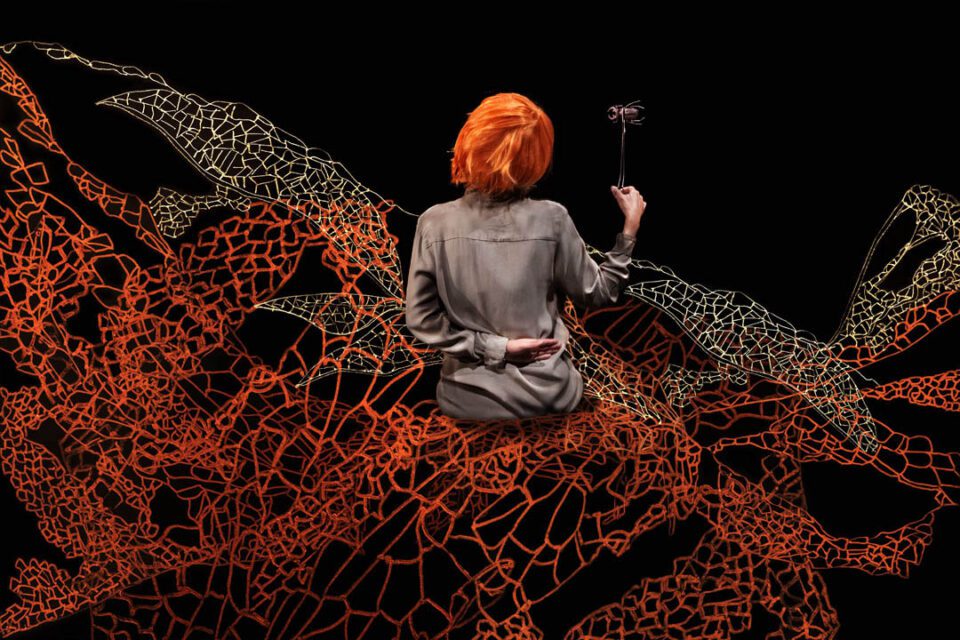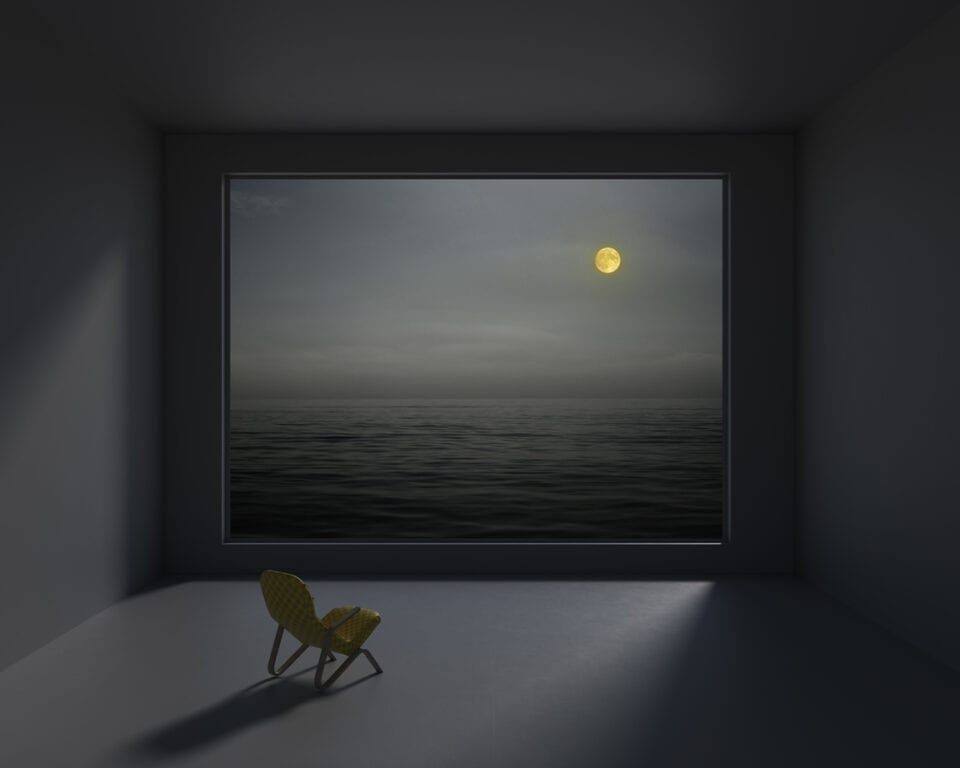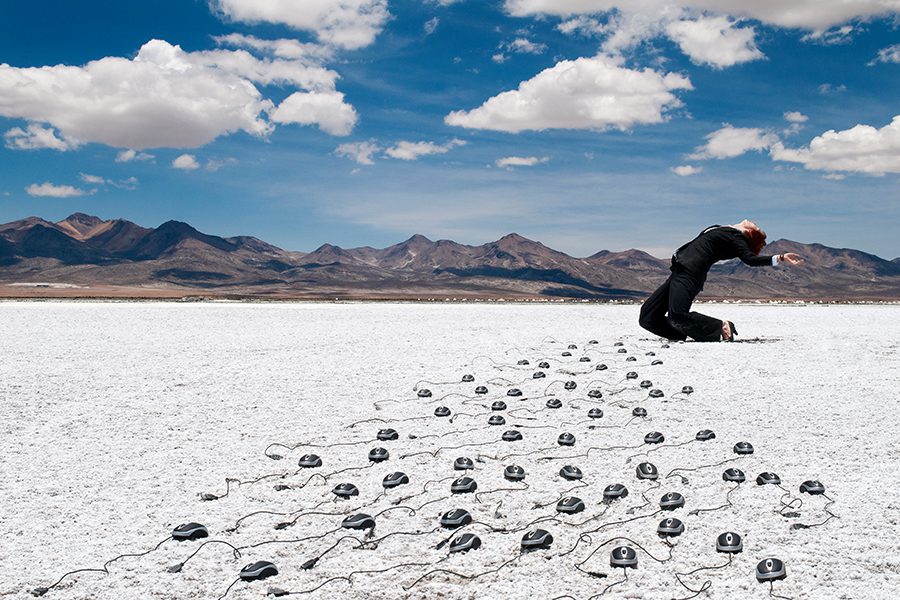The idea of the “metaverse” is slippery and complex. Largely speaking, it imagines a network of virtual three-dimensional spaces in which people can work, game and communicate using VR, AR and even smart glasses. It’s predicted to add $5 trillion to the value of the global economy by 2030. Meta (formerly Facebook) envisions a place that offers “new ways to connect and share experiences.” Yet this digital utopia comes with myriad questions. How much time will we spend online? In what ways will it influence our real-world relationships? Will existing stereotypes and biases be reflected in the digital sphere? What about crime? Crucially, will people really want to use it? We’ve taken a deep dive into our Archives, finding five creatives whose works respond to – and use – emerging technologies: to critique, to calm and to imagine.

Sculpture for Tomorrow | Six N. Five
Six N. Five design studio, photographer Cody Cobb and spatial designer Ben Willett share a love of finding tranquil moments in an otherwise chaotic world. One-of-a-kind sculptures nestle into distinct natural environments, which complement each other in form, colour and material. Rust-orange shapes stand out against bright white cliffs. Pink sunsets reflect off smooth silver metal. Iridescent white light bulbs pop against the shadows of rock formations. These images settle the mind through magnetising simplicity, drawing onlookers into glossy lakes and pearly skylines. Six N. Five specialises in still life visuals and videos with a clean and modern aesthetic. At the top of the page is The Red Spot, an animation that digitally reimagines nature as a looping, serene seascape that plunges the viewer into a deep state of calm.

Exposing Digital Bias | Mónica Alcázar-Duarte
“The susceptibility of AI to bias is one of its most visible, acknowledged and harmful features,” writes Professor Helga Nowotny in In AI We Trust (Polity, 2021). “Technologies are intrinsically intertwined with conscious or unconscious bias, since they reflect existing inequalities and discriminatory practices in society.” Mónica Alcázar-Duarte’s (b. 1977) searing work visualises the harmful relationship between real-world and online stereotypes. The ongoing series Second Nature, which focuses on the experiences of over 100 Mexican women, is based on intense research into search engines, whose algorithms are continuously learning and developing from user input. “Latin women seem to be particularly victimised,” the artist explains. One work is titled How do you stop these people. “The titles come from a fragment of web search results, which included the terms: Mexican, Mexican women, Mexicans are.”

Distorting Reality | Alex Lysakowski
Globally, Amazon operates more than 175 fulfillment centres with over 150 million square feet of space. It is now entering the world of robots, with its Boston facilities producing 330,000 a year. Alex Lysakowski (b. 1990) is a Canadian photographer exploring the real-world spaces associated with commerce. Through photo manipulation, he creates uncanny and absurd scenes, stretching the exteriors of trucks, storage units, hotels and shipping containers, amplifying the space that industry takes up within our lives. As such, the Antistructure series critiques an age of mass production. These digitally enhanced images exaggerate structural forms, with corrugated iron extending upwards into the sky in maze-like forms. These hyperbolic images express the overwhelming presence of consumerism in the 21st century.

Virtual Nature | Mue Studio
Bodies of water are undeniably restorative, with their cognitive effects revered the world over. “Blue Mind” science has proven the health benefits – both physically and psychologically – of being close to oceans, rivers or even artificial beaches – being on, in, under, or simply near to water. In an age of media proliferation, can “Blue Health” be maintained through imagery alone? In lieu of “real-life” visits, is there a visual antidote to be found in the digital realm? And if so, what does it mean to pine after a world that doesn’t exist? Mue Studio (Minjin Kang and Mijoo Kim) specialises in “visual escapism” – through three-dimensional image design, art direction and photography. The studio creates digital non-places that exist between fantasy and reality, exploring how artificial places might still offer refuge and solace. These serene compositions quiet the mind through rippling pools and soothing sunsets.

Visualising Life Online | Astrid Verhoef
Astrid Verhoef’s (b. 1973) practice examines humanity’s position in relation to manufactured and natural spaces. Whilst the Urbanite series (shown above) was started in 2010, its themes find continued relevance in today’s world. The works are playful and often humorous, placing individuals and objects in surprising settings. Just like many artists creating work at this pivotal moment, Verhoef imagines humankind’s place in the natural world. As we straddle the boundaries between real and surreal, the subject of the Verhoef’s series is a city-dweller and office worker (often played by Verhoef herself), who struggles amongst the elements in a desolate environment. In one shot, the simple computer mouse rises en masse against its user. It serves as a a neat metaphor for the speculative worst-case scenarios imagined around AI.





